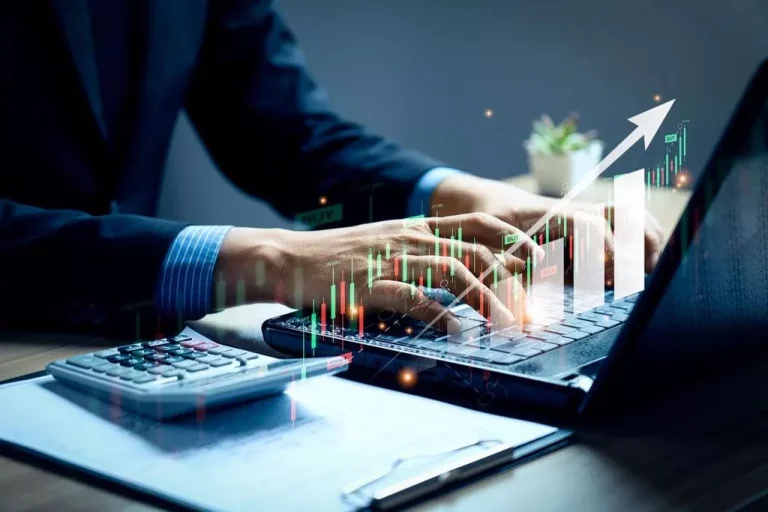AMM users provide liquidity swimming pools with crypto tokens, whose costs are determined by a relentless mathematical method. Can be optimized for different functions, and are proving to be an necessary instrument in the DeFi ecosystem. If an AMM lacks an sufficient liquidity pool, traders that buy and promote assets on the decentralized finance (DeFi) AMM might expertise a substantial price impact. AMMs offer liquidity suppliers a small proportion of the AMM’s fees, which frequently come in the form of LP tokens, so as to inspire them to deposit their digital property with the protocol. Yield farming includes the method of submitting belongings to earn incentives.
Lending Amms
In some instances, you probably can then deposit – or “stake” – this token right into a separate lending protocol and earn extra interest. In this constant state of balance, buying one ETH brings the price of ETH up slightly along the curve, and selling one ETH brings the value of ETH down barely alongside the curve. It doesn’t matter how unstable the worth will get, there’ll ultimately be a return to a state of steadiness that reflects a relatively correct market price. Automated market makers are remodeling DeFi by infusing liquidity into the ecosystem, simplifying crypto buying and selling. Although their full potential stays untapped, AMMs are poised to drive innovation in DeFi, including new financial property and enhanced DEXs. With NFT and virtual market makers already emerging, the future will see AMMs expand further into areas like lending, insurance, and actual assets.
Liquidity suppliers are users who deposit their assets into the liquidity swimming pools. AMMs use mathematical equations to maintain balance in belongings in a liquidity pool. When a user chooses to trade on a decentralized buying and selling platform, they perform it directly with the AMM by exchanging one token for another at a price established by the liquidity pool’s algorithm.
Virtual AMMs incorporate digital balances and create a extra balanced pricing model that eliminates slippage considerably. A Quantity Of well-liked cross-chain market makers, just like the Synapse Protocol, THORChain, Ren Protocol, and more, permit users to swap tokens across chains. These automated market makers, per their name, change the ecosystem parameters in response to market situations. Sure, AMM-style mechanics are being explored in non-financial contexts such as NFT pricing, prediction markets, and even decentralized bandwidth or storage markets. The core principle—using a mathematical method https://www.xcritical.com/ to facilitate peerless exchange—can be adapted to any system the place supply, demand, and pricing could be encoded on-chain.
Notice that the equation highlighted as an example is just one of many current formulas used to steadiness AMMs. Balancer uses a more advanced method that enables its protocol to bundle up to eight tokens in a single pool. When there are three or extra tokens in a pool, it’s best to make use of the fixed imply model; the fixed is the geometric imply of the product of the portions of the number of tokens within the pool.
- If an imbalance happens inside a liquidity pool, usually as a outcome of high volatility, exchange costs will begin to slip from the usual market value.
- Therefore, exchanges should be certain that transactions are executed instantaneously to scale back value slippages.
- This mannequin is carried out together with the token swap model in Bancor V2 protocol.
An Automatic Market Maker (AMM) is a kind of algorithm that’s created utilizing blockchain expertise. It automates the method of conducting trades in the amms meaning decentralized exchanges. It operates on blockchains and makes use of sensible contracts, due to which trades may be executed at any time, in a permissionless method, and for substantially lesser charges. Finally, this facilitates more environment friendly trading and reduces the impairment loss for liquidity providers. Underpinning AMMs are liquidity pools, a crowdsourced collection of crypto belongings that the AMM uses to trade with folks shopping for or promoting certainly one of these belongings.
These AMM exchanges are based mostly on a relentless operate, where the combined asset reserves of buying and selling pairs should stay unchanged. In non-custodial AMMs, user deposits for buying and selling pairs are pooled inside a smart contract that any trader can use for token swap liquidity. Customers commerce towards the good contract (pooled assets) versus instantly with a counterparty as in order guide exchanges. If an AMM doesn’t have a enough liquidity pool, it might possibly Decentralized finance create a large value influence when merchants purchase and sell belongings on the DeFi AMM, resulting in capital inefficiency and impermanent loss.
A dealer could then swap 500k dollars worth of their own USDC for ETH, which might increase the price of ETH on the AMM. The problem with hybrid fashions is to sew these completely different components into a strong and reliable AMM cloth. An example of such a mannequin is Curve Finance, which combines CPMM and CSMM models to supply a capital-efficient platform to decentralized change pegged property. Constant product market makers (CPMMs) are the primary type of automated market maker (AMM), introduced by Bancor in 2017. A yr later, the launch of Uniswap made the CPMM mannequin even more in style.
This process isn’t just a curiosity—it’s essential for DeFi to operate properly. Arbitrage retains AMM costs aligned with the relaxation of the market, making certain users get truthful and correct pricing although AMMs operate in isolation from traditional order books. If that’s the case, the AMM then adjusts the value for every cryptocurrency, in accordance with the method I talked about earlier. This is as a end result of exchanges typically function utilizing an order book model, whereby an fascinated purchaser is connected with a willing vendor. But if there isn’t an appropriate get together to take the other side of the trade, slippage happens – delaying executions while widening spreads and increasing opportunity prices. The result’s that ultimately it turns into more durable to buy and sell belongings.

They are merchants and liquidity suppliers, where liquidity suppliers concern tokens, which traders then swap. A liquidity pool might encompass ten million dollars in Cryptogain and ten million dollars in Blockrex. Jake, a crypto dealer, needs to swap $500,000 value of his personal Blockrex for Cryptogain.
This proved significantly difficult in the early stages of the Ethereum project. Choice of tokens – There is a big and rising number of cryptocurrencies however only a tiny proportion are supported by centralised exchanges. AMMs fill the gap available in the market as there are not any restrictions on what coins may be listed as long as liquidity may be incentivised.
What Are Liquidity Swimming Pools And Liquidity Providers?

Nonetheless, it’s potential for the revenue acquired through transaction charges to cowl such losses. When merchants place a transaction to swap crypto they submit an amount of asset A which returns a given amount of asset B. A sensible contract ensures that the total value of the liquidity pool is the same earlier than and after every transaction. Every liquidity pool is a definite market for a specific token pairing. By contributing funds, liquidity suppliers earn a share of buying and selling fees generated by transactions throughout the pool proportionate to the entire liquidity they supply.
For example, the ratio of deposited tokens will shift as soon as a LP deposits them in a liquidity pool, leading to a lack of value. Balancer is an AMM-based decentralized exchange that launched in 2020. Balancer offers multi-asset swimming pools to increase exposure to different crypto belongings and deepen liquidity.

These swimming pools then use algorithms to set token costs based on the ratio of belongings in the pool. When a person needs to trade, they swap one token for an additional immediately by way of the AMM, with costs decided by the pool’s algorithm. Each AMM makes use of a set mathematical method that helps decide the worth of assets throughout the AMM’s liquidity pools. Every time a person needs to trade a token on an AMM, they add an asset to the liquidity pool. As it modifications the fixed, say k, the price of the assets is set to take care of the steadiness of the pool. This is the place prices on AMMs can range from the more fixed ones trading on exchanges.
Decentralised exchanges are blockchain-based with all transactions committed to the chain paid for by charges calculated in relation to the specifics of the consensus mechanism and network congestion. Ethereum is by far the most well-liked chain for DEFI nevertheless it has turn into a sufferer of its personal success struggling to scale with fees rising to exorbitant levels. If you may be contemplating using a DEX you should incorporate payment comparison into your decision-making process.

